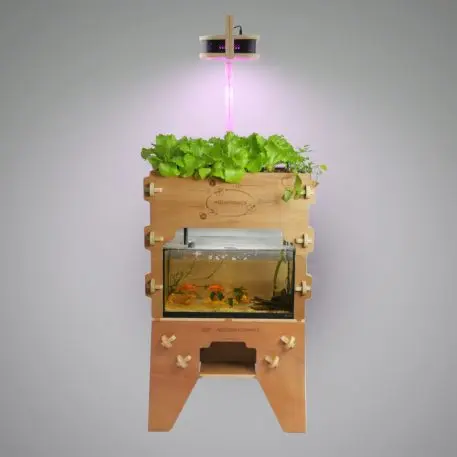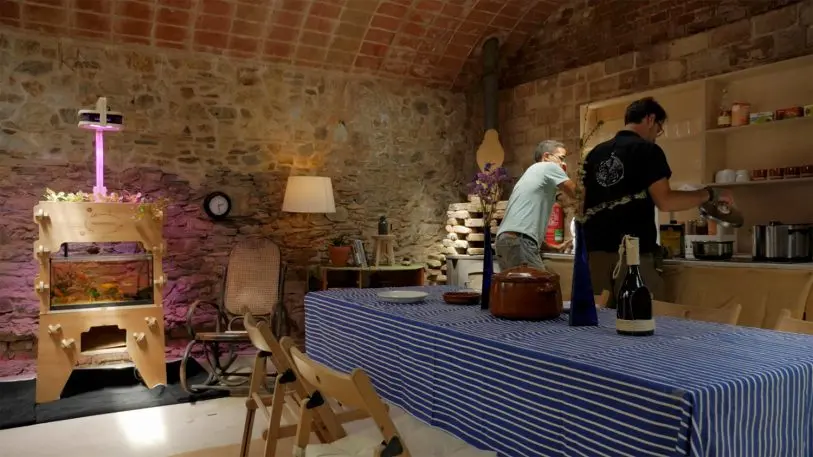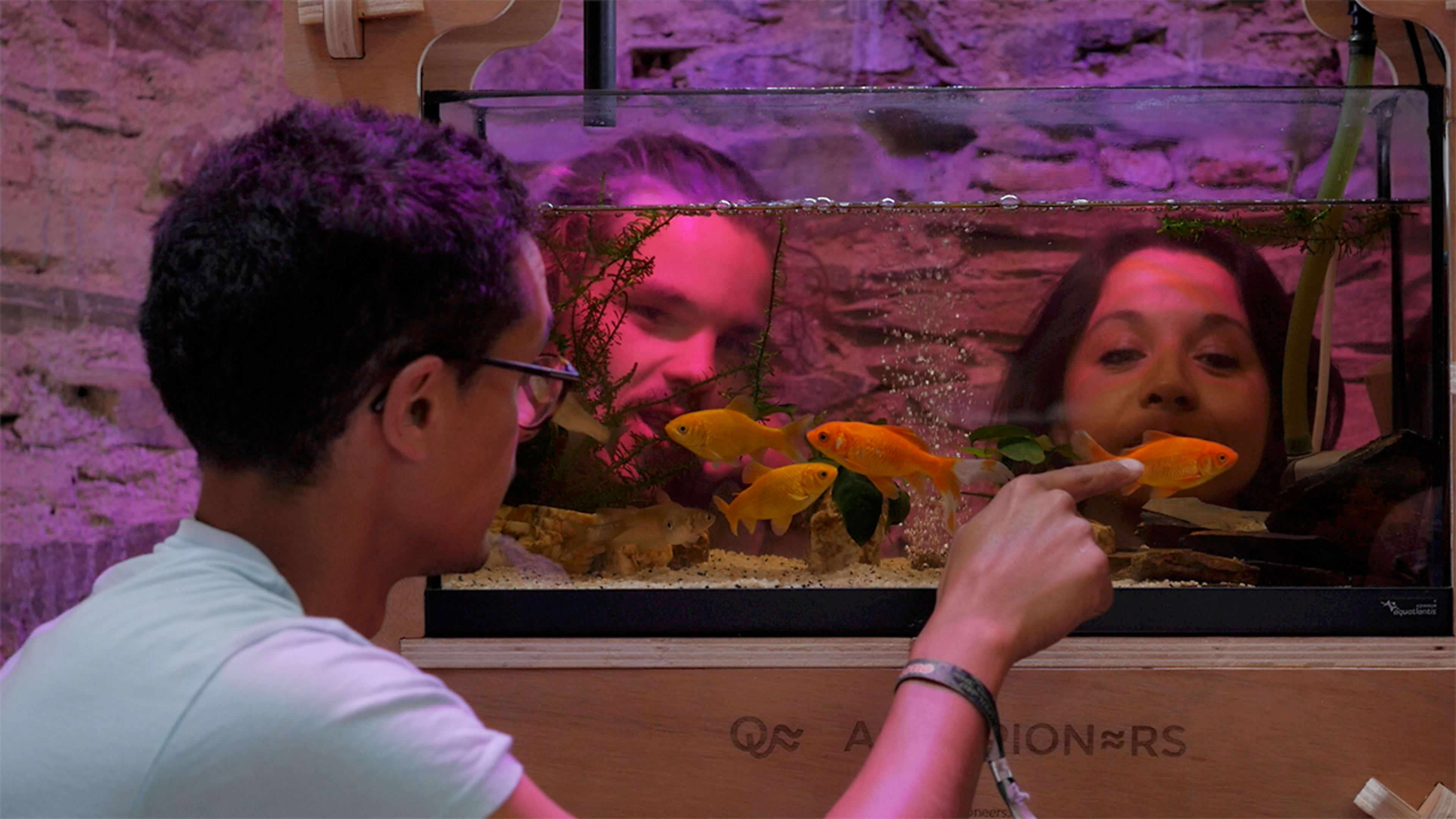If you want to try growing part of your lunch inside your kitchen, one option is to drop nearly $200 on a smart garden that uses artificial intelligence to help greens or tomatoes grow faster (the device also requires the purchase of custom “plant pods” rather than just seeds). Another option: download a free digital file, take it to your local maker lab, and print out a garden that’s a little lower-tech.

Instead of sensors and machine learning, the Aquapioneers Ecosystem relies on fish. The small kit, designed to be constructed from plywood in minutes, has space for a standard small aquarium and uses aquaponics to grow food. At a little more than two feet wide, one foot deep, and about four feet tall–not counting the light attached on top–it can fit in the corner of a room.
As fish poop in the tank, microorganisms convert the waste into fertilizer for the plants. As the plant roots suck up the fertilizer, they naturally clean the aquarium. This cycle continues indefinitely. An LED light, designed to emit only the spectrum of light that plants need to grow, uses little energy. The process uses 90% less water than growing in soil and grows food as much as twice as fast. A crop of lettuce, for example, can be harvested in four weeks, versus seven to eight weeks in a typical garden.
The kit isn’t the first to make an aquaponic system small enough for a kitchen. Another, from the Bay Area-based company Back To The Roots, is tiny enough to fit on a countertop. But the new project is the first to provide an open source design. By working with maker labs–specifically Fab Labs, a network of more than 1,100 maker spaces around the world–Aquapioneers wanted to eliminate the emissions from shipping products from a central factory. The open-source files will allow others to also tweak the design, improving performance more quickly than a tiny startup could on its own. The company also wanted to make the kit accessible to anyone. Users only have to pay for materials and time in a maker lab (or, alternately, can pay a lab to make it for them). They also have to buy fish–the designers recommend using eight small fish, such as goldfish or guppies.
“We see it as a way to decrease our carbon footprint, and to enable anyone, anywhere, to download it and discover aquaponics,” says Guillaume Teyssie, one of the co-founders of the Barcelona-based startup. “Our mission is to help people eat better, so we’ve seen patents as a block.”

The startup, which launched at Barcelona’s Green Fab Lab, wants to help expand urban agriculture. Another design the company is piloting is a larger greenhouse–with a printable frame, it provides about 25 square meters of growing space–that could sit on city rooftops, producing more than 60 pounds of fish and around 660 pounds of vegetables a year. That design will also be available open-source. To make the business viable, since the kits won’t be sold, the founders are creating related services to sell instead; they envision entrepreneurs in other cities doing the same thing.
“We’re renting this kit inside offices of big companies that have open spaces and sterile environments where employees are stressed or bored,” Teyssie says. “Basically, we use the aquaponic ecosystem as a well-being and team-building tool.” In a pilot the startup is running with one company, employees build the kits in a workshop, watch the system work, and use the herbs grown inside to cook in another workshop.
The tiny kit doesn’t grow huge crops of food and is limited to herbs, greens, and strawberries. But the company sees it as a way to help people become more interested in urban agriculture as a whole and to reconnect with the natural world. “We’ve been fascinated by the ecosystem approach–this closed cycle and synergy between fish, plants, and microorganisms,” he says. “For us, aquaponics is a way to force us to understand how nature works.”
The startup is currently running a crowdfunding campaign to cover research costs and to finalize the open-source design, which will be released to the public shortly after the campaign ends.
Recognize your brand’s excellence by applying to this year’s Brands That Matter Awards before the early-rate deadline, May 3.
